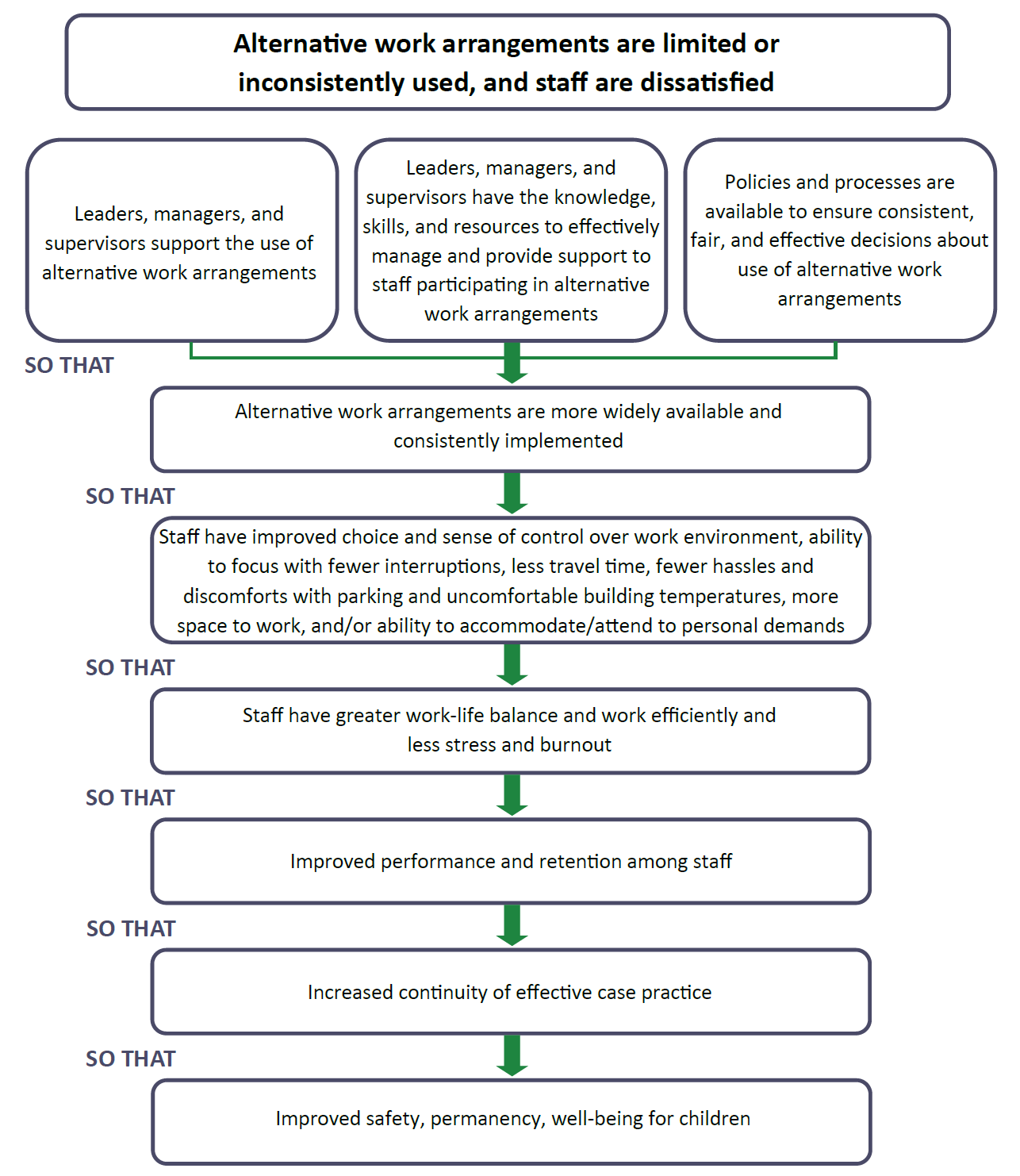Telework
During the needs assessment process, theories of change were developed for the three primary areas of need identified in partnership with the Washington State Department of Children, Youth and Families. Through a series of steps and causal links, a theory of change provides a roadmap to address the root causes of an identified workforce problem and describes how and why changes are expected to lead to the desired outcomes. In Washington, the theories were informed by various aspects of the needs assessment process (e.g., survey data, root cause analyses, implementation team input) and relevant research on the targeted workforce problems.
The theory of change associated with the selected intervention, telework, began with a problem statement around employee dissatisfaction with work mobility and availability of alternative work arrangements, despite existing policies that permitted such arrangements. Though this problem was not necessarily seen as a primary cause of turnover, it was a factor that many stakeholders thought could mitigate turnover if it were addressed. The root cause analysis identified several potential causes of this issue, which were distilled to three key changes needed:
- buy-in and support from managers,
- managers who were knowledgeable and skilled in effectively managing staff with alternative work arrangements, and
- policies and processes that would ensure consistent, fair, and effective decisions about use of alternative work arrangements.
With those three conditions in place, it was reasoned that alternative work arrangements would be more widely available and consistently implemented. This would lead to a cascade of improvements for employees, such as more positive experiences of their work environment, lower stress and burnout, enhanced productivity and performance, and lower likelihood of leaving the job. Finally, these changes were thought to extend to improvements for children, youth, and families.
The following image depicts the theory of change beginning with a problem statement followed by a series of steps that lay out the logic on how that problem will be addressed.
